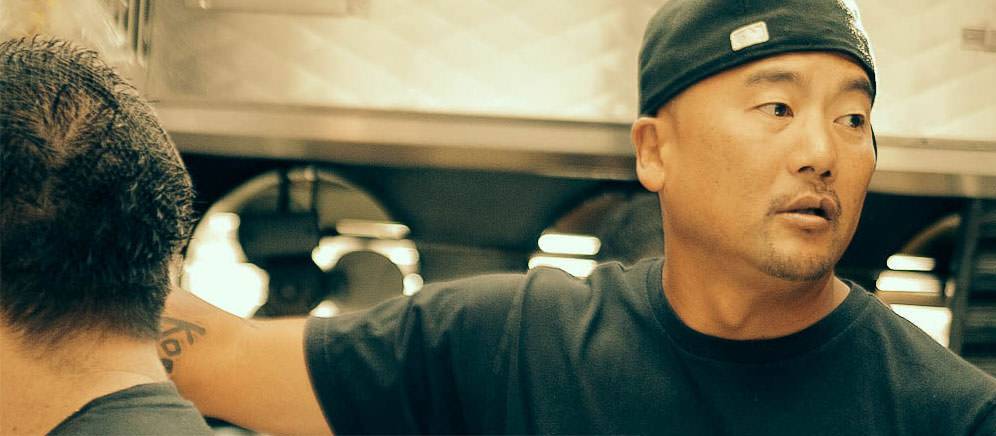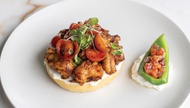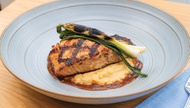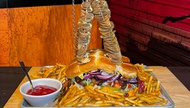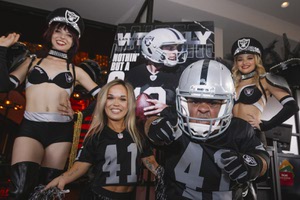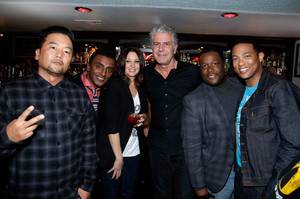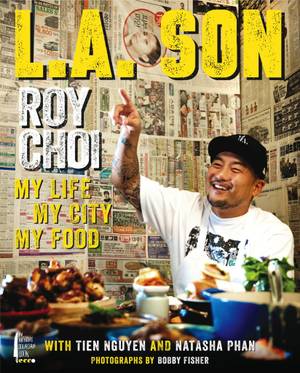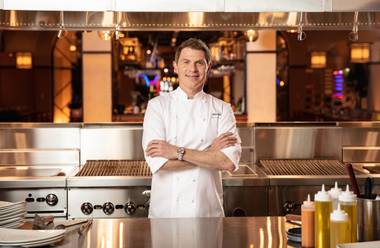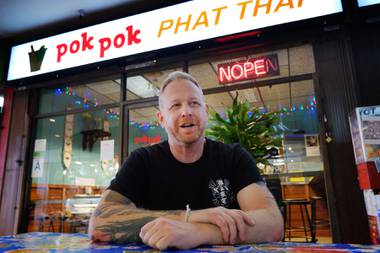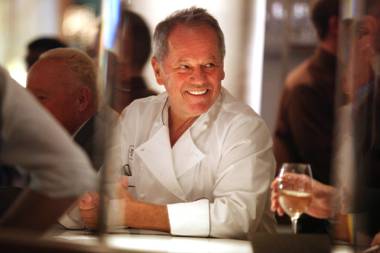LA-based chef Roy Choi and I are chatting at the bar inside Atomic Liquors.
We’re in the middle of the post-shoot crush from Anthony Bourdain’s live Parts Unknown Last Bite broadcast on November 10, a talk show-style wrap for the second season of his CNN travel/food/issues show, Parts Unknown. Choi has spent the past hour in the hot seat, talking guns, poverty and food with Bourdain and his other guests—chef Marcus Samuelsson, CNN anchor Don Lemon, actor Wendell Pierce and comedian Bonnie McFarlane. Now, he’s shoved up against the bar with my iPhone in his face, explaining the effect of his famous Korean tacos and why his new cookbook and memoir, L.A. Son, was so hard to write, when a fan steps in and hands him a copy. Choi looks up, shocked to see the book that was just released November 5. Then he scribbles an inscription: “This is such a surprise.”
The words speak to the moment and perhaps also to Choi’s career path, from a troubled childhood on LA streets, to the fine-dining kitchen of Le Bernardin, to the empire of Kogi food trucks that made him a star in his own right.
You filmed an episode for the first season of Parts Unknown with Anthony Bourdain focused on LA. How did you choose where to go? They focused on Koreatown, but from there, they really allowed me the latitude to help them through the storyline and really show them little kernels. I was like their fixer.
When you saw the episode, how did you think Tony portrayed your neighborhood? Let me put it this way: Tony gave our neighborhood every bit of respect and depth and history and humor that it deserves.
You just came out with a cookbook and memoir last week, L.A. Son: My Life, My City, My Food. What was the process of writing it? Tony’s my publisher. And the same latitude he gave me for the show, he gave me that for the book, as well. The process of the book was it flowed like water, but it was as difficult as anything could be. I didn’t want to just write a pretty cookbook. I wanted to write a book that represented a voice in immigration and growing up as a troubled kid, and to write that, you’ve got to write with a voice that is honest and that goes as deep and as hairy as it needs to go. Sometimes in life when you go through stuff, you don’t want to relive it. Or even reliving it, you don’t know how far you can really take it. Even this show talked about a lot of things, but there’s only a certain level you can take things to in the public space. This book tried to take it all the way.
It sounds pretty intense and personal. Was it hard to make the choice to tell those stories? Yeah, and that’s what the co-authors really helped me do. I surrounded myself with two co-authors, and I told them to always remind me to keep it rated R. So every time I turned in something, just naturally my body or my mind would take it to PG-13 or maybe protect something. They would give it back and tell me, “It has to go further.”
What’s going on in your LA food empire these days? I run the Kogi trucks. The Kogi trucks have spawned my ability to open restaurants, but really it’s about the trucks, about feeding people and about making food affordable, accessible and fun.
Over the years that you’ve been doing the Kogi trucks, have you seen the clientele change? It’s all people. Kogi feeds everyone. We don’t have any color lines, any economic lines, any cultural lines. Really, it’s like the subway in New York—it’s for everyone. From the beginning, it’s always been for everybody; it’s only gotten bigger. It hasn’t changed; it’s only intensified.
When you started creating your signature Korean taco, did you realize it was going to be this sort of cultural fusion paradigm and set a new trend? No. I didn’t know it was going to be revolutionary, I just knew we had something very special. Because when the team and I ate the taco that we made, we became zombies and we just went out to the street and started selling them. We just ate it, and it became this thing that we had to get out there.
What are you obsessed with eating right now? Swedish Fish from Denmark. The jelly candies from the Norwegian area are so much better than we have here.
And what’s next for you career-wise? What I’m doing next is, I’m going to bring chef-driven food and delicious food to the inner cities of America.
How are you going to do that? I’m going to put the burden on my colleagues and I’m going to do it myself—opening restaurants, kiosks, small markets, just making it a part of life just like everything else.
